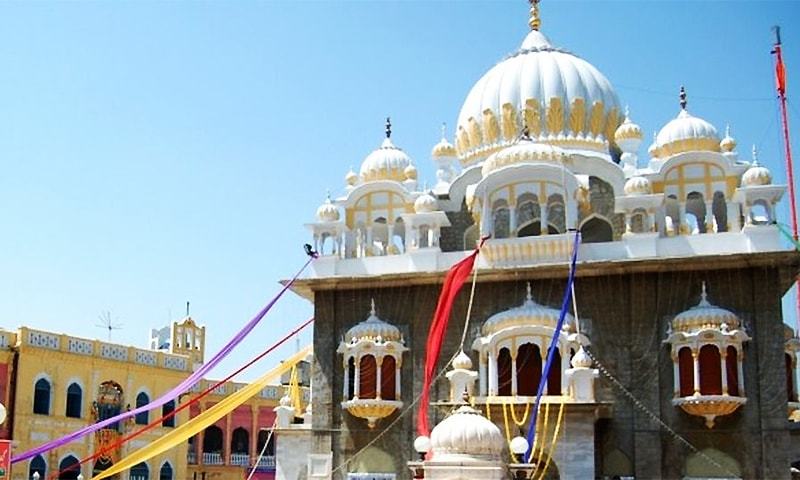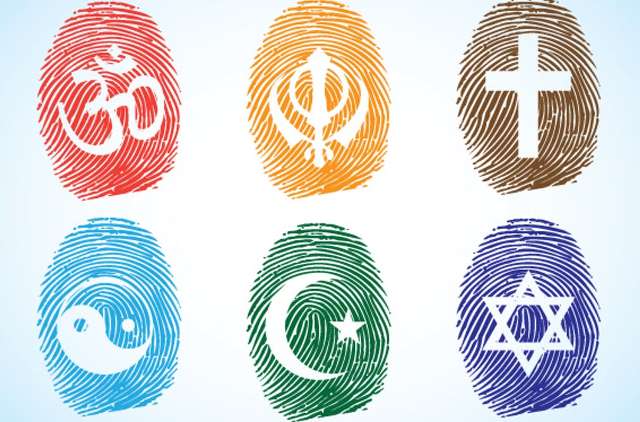Religious-Heritage
Abstract:

Pakistan, a nation situated at the crossroads of ancient civilizations, boasts a diverse and vibrant religious heritage that has evolved over millennia. From the ancient Indus Valley civilization to the arrival of Islam and subsequent influences, Pakistan's religious landscape is multifaceted and complex. This paper delves into the religious history of Pakistan, examining the indigenous beliefs, the advent and spread of Islam, the contributions of various religious figures and movements, and the contemporary religious dynamics shaping the nation. By exploring Pakistan's religious heritage, we gain insights into its cultural identity, societal values, and the challenges and opportunities it faces in the modern world.
Keywords:
Pakistan, religious heritage, Islam, Indus Valley civilization, Hinduism, Buddhism, Sikhism, Christianity, Sufism
Introduction:

Pakistan, located in South Asia, is a land rich in history, culture, and religious diversity. The religious heritage of Pakistan is deeply intertwined with its tumultuous past, reflecting the interactions of various civilizations, religions, and cultures that have left indelible marks on its landscape. From the ancient civilizations of the Indus Valley to the arrival of Islam and the subsequent influences of Hinduism, Buddhism, Sikhism, and other faiths, Pakistan's religious tapestry is intricate and multifaceted. In this comprehensive analysis, we embark on a journey through the religious heritage of Pakistan, exploring its indigenous beliefs, the advent and spread of Islam, the contributions of various religious figures and movements, and the contemporary religious dynamics shaping the nation. By understanding the religious heritage of Pakistan, we gain valuable insights into its cultural identity, societal norms, and the challenges it faces in the modern era.
Indigenous Beliefs and Ancient Civilizations:

The religious heritage of Pakistan can be traced back to the ancient civilizations that flourished in the region, most notably the Indus Valley civilization. Dating back to the 3rd millennium BCE, the Indus Valley civilization was one of the world's earliest urban societies, with major settlements such as Mohenjo-Daro and Harappa. The religious beliefs of the Indus Valley people are still shrouded in mystery, as deciphering their script, known as the Indus script, remains a challenge. However, archaeological findings suggest the presence of a complex belief system characterized by reverence for nature, ritualistic practices, and possibly the worship of deities associated with fertility and water. The artifacts unearthed from Indus Valley sites depict images of animals, anthropomorphic figures, and possibly early forms of ritualistic symbols. Scholars speculate that the people of the Indus Valley practiced ancestor worship, nature worship, and various rituals aimed at ensuring fertility and prosperity. Despite the decline of the Indus Valley civilization around 1900 BCE, its cultural and religious influences persisted and merged with incoming traditions, shaping the religious heritage of the region for centuries to come.
Arrival and Spread of Islam:

The most significant chapter in Pakistan's religious heritage is the advent and spread of Islam, which profoundly transformed the socio-cultural fabric of the region. Islam reached the Indian subcontinent in the 7th century CE through Arab traders and missionaries, gaining momentum during the Umayyad and Abbasid caliphates. The spread of Islam in present-day Pakistan was gradual, marked by peaceful missionary activities, as well as military conquests led by Muslim rulers such as Muhammad bin Qasim. Sufi saints and mystics played a crucial role in popularizing Islam among the masses, advocating a message of love, peace, and spiritual transcendence. One of the most revered figures in Pakistan's Islamic history is the Sufi saint, Data Ganj Bakhsh, also known as Ali Hajweri, who lived during the 11th century. His seminal work, "Kashf al-Mahjub" (Unveiling the Veiled), remains a cornerstone of Sufi literature and has contributed significantly to the spread of Sufism in the region. The establishment of Muslim empires, such as the Ghaznavids, Ghurids, Delhi Sultanate, and Mughal Empire, further solidified Islam's presence in the Indian subcontinent. The Mughal period, in particular, witnessed a flourishing of Islamic art, architecture, and scholarship, with iconic monuments such as the Badshahi Mosque and the Shalimar Gardens in Lahore standing as testaments to this rich heritage.
Hinduism, Buddhism, and Other Indigenous Faiths:

Alongside Islam, Pakistan's religious landscape is also influenced by Hinduism, Buddhism, Sikhism, and other indigenous faiths that have left enduring legacies in the region. Hinduism, one of the world's oldest religions, has a profound historical presence in Pakistan, particularly in the province of Sindh, where several ancient Hindu temples, such as the Katasraj temple complex, testify to its ancient roots. The Indus Valley civilization, with its reverence for nature and ritualistic practices, likely laid the foundation for many aspects of Hindu religious traditions. Buddhism, which spread across the Indian subcontinent in ancient times, also left its mark on Pakistan's religious heritage. The Gandhara region, encompassing parts of present-day Pakistan and Afghanistan, was a major center of Buddhist art and culture during the Mauryan and Kushan periods. The Gandhara sculptures, characterized by their Greco-Buddhist style, reflect the syncretism between Hellenistic and Indian artistic traditions. Sikhism, founded by Guru Nanak in the 15th century, emerged in the Punjab region, which spans parts of present-day Pakistan and India. Sikhism's emphasis on monotheism, social equality, and service resonated with people from diverse backgrounds, contributing to its spread across the region. The birthplace of Guru Nanak, now known as Nankana Sahib, is a revered pilgrimage site for Sikhs worldwide. Despite the dominance of Islam in Pakistan, these indigenous faiths continue to thrive, albeit as minority religions, contributing to the country's religious pluralism and cultural diversity.
Contemporary Religious Dynamics:

In contemporary Pakistan, religion continues to play a significant role in shaping individual identities, societal norms, and political discourse. The country's official name, the Islamic Republic of Pakistan, reflects its status as an Islamic state, with Islam serving as the cornerstone of its legal and governance systems. However, Pakistan's religious landscape is far from monolithic, as various sects and interpretations within Islam coexist alongside religious minorities. Sunni Islam is the predominant sect, with significant Shia and Sufi Muslim communities also present. The Ahmadiyya Muslim community, though considered non-Muslim according to the constitution, has a sizable presence in Pakistan and faces discrimination and persecution due to their religious beliefs. Interfaith relations in Pakistan, while historically characterized by periods of harmony and coexistence, have also been marred by tensions and conflicts, often fueled by sectarianism and religious extremism. The blasphemy laws, enacted to protect Islamic values, have been controversial, leading to accusations of misuse and injustice against religious minorities. Furthermore, Pakistan's geopolitical dynamics, including its relationship with neighboring India and Afghanistan, have been influenced by religious factors, particularly in the context of the Kashmir conflict and the rise of militant groups operating in the region.
Conclusion:
Pakistan's religious heritage is a tapestry woven from the threads of ancient civilizations, indigenous beliefs, and the influences of major world religions. From the ancient Indus Valley civilization to the advent of Islam and the subsequent interactions with Hinduism, Buddhism,